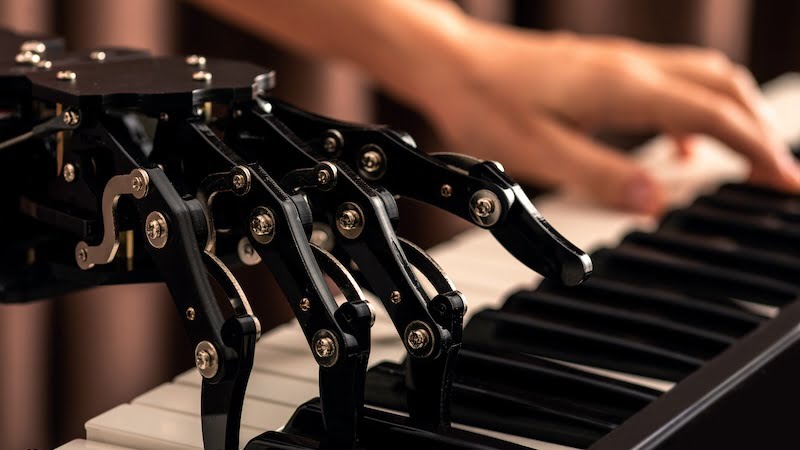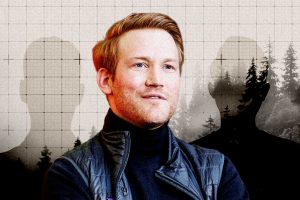
How far can the use of AI in art go? The Chilean artist Mauricio Bustos alias FlowGPT has his own opinion on this, which raises exciting but also controversial questions. A critical analysis.
The use of artificial intelligence (AI) in music production is increasingly raising legal and ethical questions. Chilean artist Mauricio Bustos, aka FlowGPT, uses AI to imitate the voices of well-known artists, which has made him a controversial and celebrated AI music pioneer.
Let us take this “artistic act” as an opportunity to address some interesting questions, namely, firstly, how far the use of AI in art can go, specifically whether Mauricio Bustos is even allowed to do what he does and what legal consequences this could have from the perspective of German law.
AI in art: background to the controversy
What is it all about? Well, Mauricio Bustos produces music using artificial intelligence (AI) by imitating the voices of famous artists. In October 2023, he released the song “NostalgIA”, which quickly went viral, garnering millions of views on TikTok and Spotify.
The track features AI-generated voices from Justin Bieber, Bad Bunny, and Daddy Yankee, without those artists actually being involved in the song's production. This caused controversy, especially when Bad Bunny reacted angrily to the song and its release, and Spotify removed the song from its platform.
Bustos, on the other hand, sees AI as an opportunity to “democratize the music industry.” In his opinion, AI enables independent producers to realize their creative visions without technical or vocal limitations. He works with human producers to create beats and lyrics, and then manipulates his own voice with the help of AI to sound like famous singers.
However, Bustos plans to develop his own artistic identity for his FlowGPT alias and move away from imitating well-known artists. Bustos hopes that AI will revolutionize the music industry and create new opportunities for independent artists.
The consequences for Mauricio Bustos
I would like to begin by pointing out that it is not my aim to make a final legal assessment of this case in this column. It is too complex for that, particularly because of its international component – it involves a Chilean artist who has, among other things, angered US and Puerto Rican singers on US, Swedish and Chinese platforms.
Of course, I am also looking at the case through the lens of a German business lawyer. But I think it is very well suited to addressing some important questions that will arise in the near future in connection with AI for art and to which answers must be found. Because the possibilities with and through AI are immense and we are only at the beginning of the development.
In Mauricio Bustos' case, it is crucial that he uses AI to imitate the voices of famous artists.
This raises the question of how far the use of AI in art can go. If we look at German copyright law, the protection of works that are considered personal intellectual creations is of central importance. AI-generated content poses a problem here, since an AI itself is not a creator.
As long as copyright law is not amended, the creator will always remain a human being. The protectability of works such as Mauricio Bustos' music therefore depends on the extent to which the human creator is creative and whether the AI's output bears the creator's personal stamp.
In Bustos' case, one could argue that his role in creating the beats and lyrics, as well as the manipulation of his own voice by the AI, constitutes sufficient human imprinting. However, it remains an open question whether this is enough to meet the work character for copyright purposes, as the artist's actual voice, which is imitated, plays a central role.
AI and art: original creative component vs. ancillary copyright
I would therefore tend to say that there is not enough original creativity here. However, one could argue differently if the lyrics and the beats play the central role in the song.
The second question concerns the legality of Mauricio Bustos' actions. This is because imitating the voices of well-known artists could violate various legal provisions, in particular the performing artists' related rights.
These rights protect the artists' performances, including their voices, and unauthorized use could be considered a violation of these rights. In addition, personal rights could be affected, as artists' voices are considered to be distinctive features of their personality. In German law, general personal rights – such as the right to one's own image – are protected and the use of voices without the consent of those affected could be interpreted as a violation of this right.
In my opinion, Bustos's action of using the voices without consent is legally problematic in this context. Finally, the question arises as to the legal consequences for Mauricio Bustos, again from the perspective of German law. If his actions take place in Germany, he could be confronted with claims for injunctive relief and damages.
The artists concerned or their rights holders could demand that Bustos refrain from using their voices and pay for the damage caused. In addition, platforms such as Spotify could be forced to remove such content in order to avoid legal consequences.
Conclusion: AI in art
The case of Mauricio Bustos shows that the use of AI raises important questions that need to be answered. I believe that clear rules need to be developed to both protect the rights of artists and to exploit the creative possibilities of AI.
These regulations must carefully balance the interests of artists who want to protect their unique voices and works with the innovative approaches of artists like Mauricio Bustos who are exploring the limits of technology. Only through such balanced legislation, detached from individual cases, can the music industry develop fairly and in a future-oriented manner.
However, the development of such regulations will take time. Will we succeed in creating such legislation in Germany and Europe, or will we cement the status quo with hasty, half-baked regulations and thus hinder innovation? It remains exciting.
Also interesting:
Source: https://www.basicthinking.de/blog/2024/07/22/go-with-the-flowgpt-oder-wie-weit-darf-ki-in-der-kunst-gehen/


